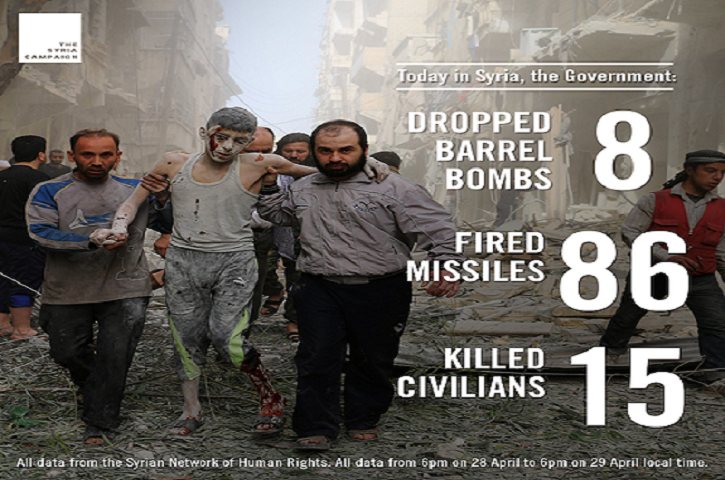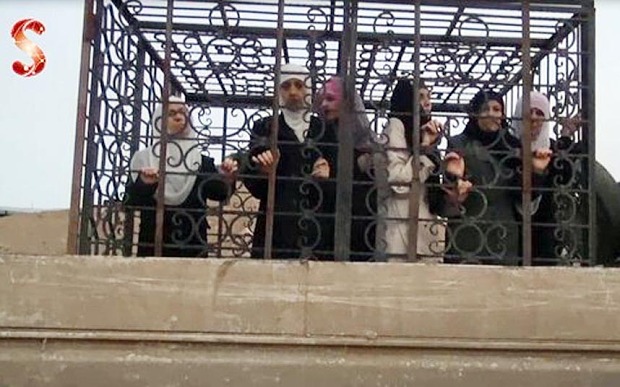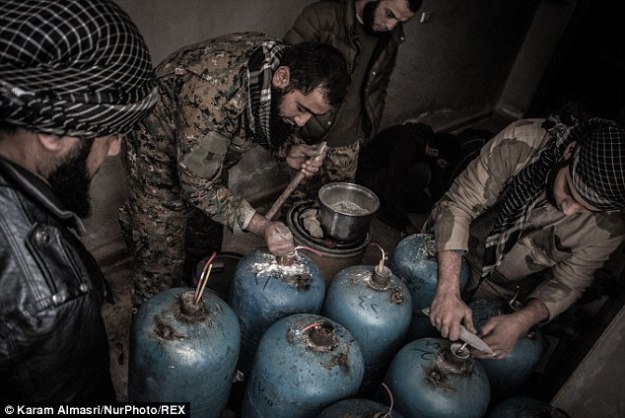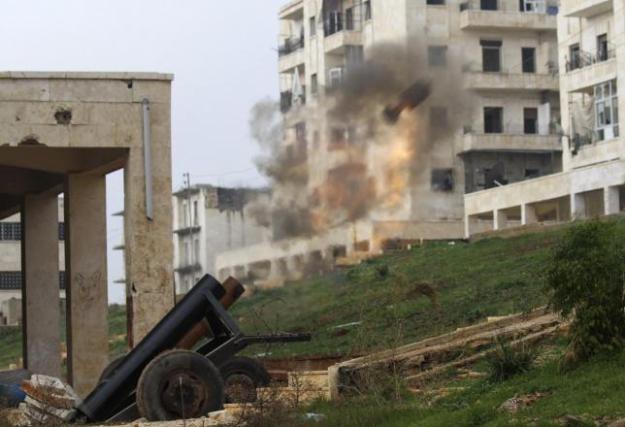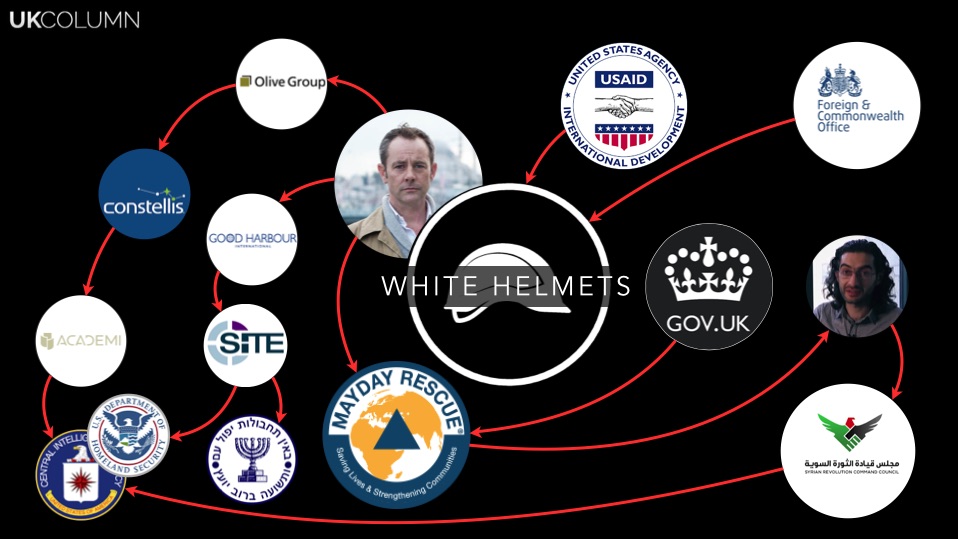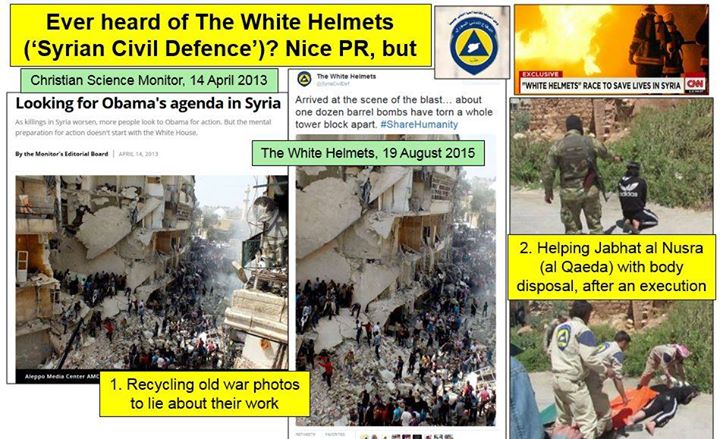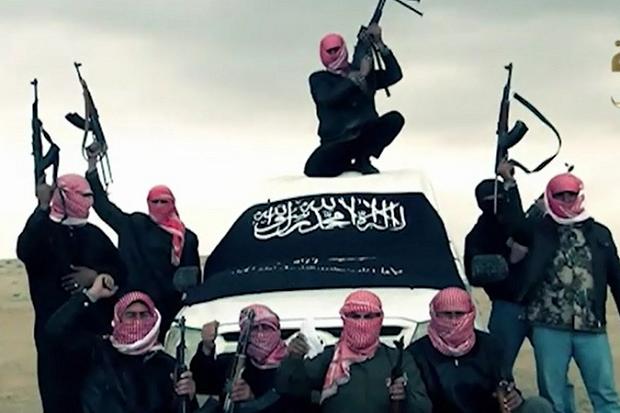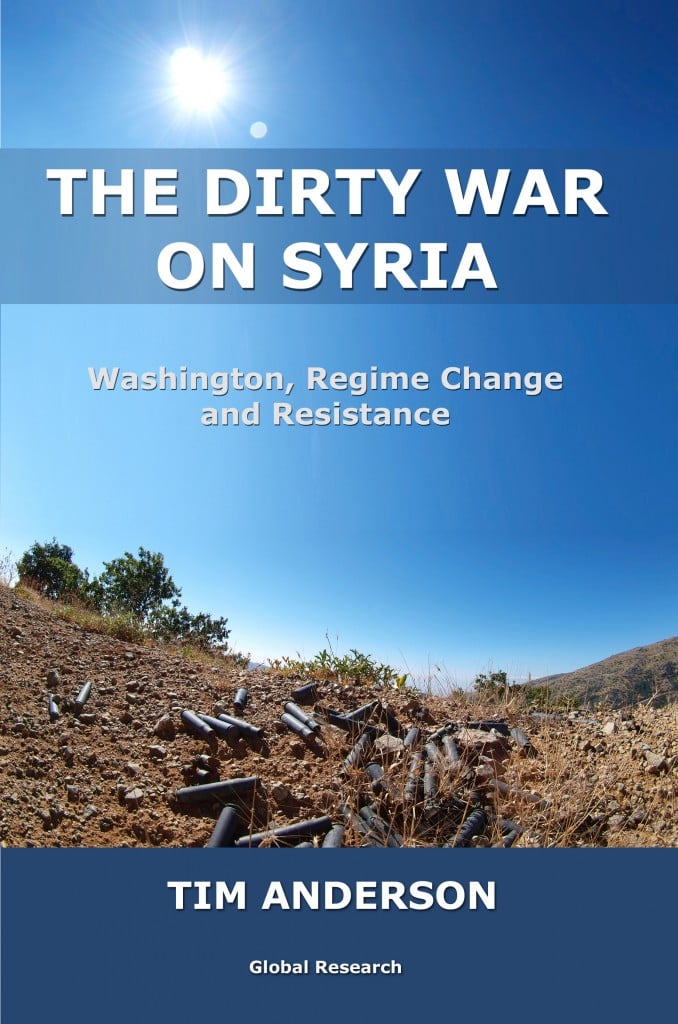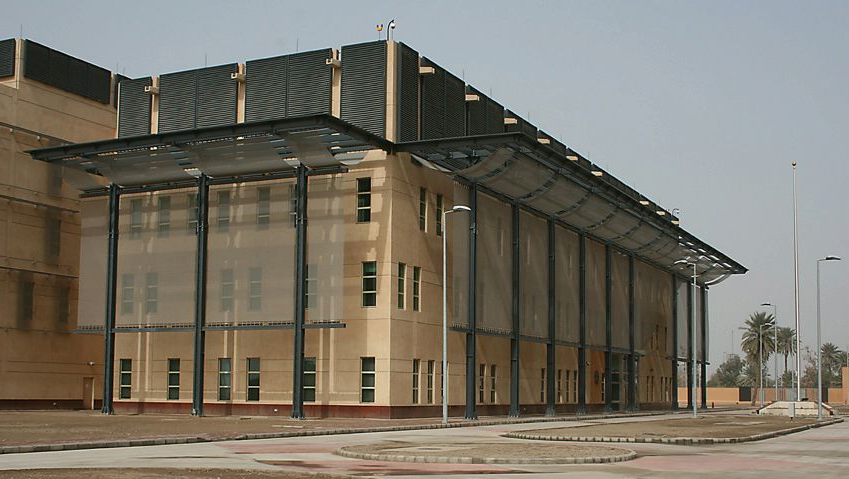When the Taliban overran Kunduz last September after a monthlong siege, the northern Afghan city became the first to fall to the insurgency since the war began in 2001. A week earlier, many Kunduz residents had left town to observe Eid al-Adha, the sacrificial feast honoring Abraham’s act of submission to God. The heavy fighting sent the remaining Kunduzis fleeing as dead bodies littered the streets.
On Friday, October 2, the city lay quiet, with just one building lit up against the dark sky. Most other international organizations had evacuated when the fighting began, but the Kunduz Trauma Center run by Médecins Sans Frontières remained open throughout the battle for the city. It was one of the few buildings with a generator. Throughout the week, violence seemed to lap against the walls of the hospital without ever engulfing it. All around the 35,620-square-meter compound, the site of an old cotton factory, fighting ebbed and flowed. Doctors and nurses marked the intensity of battle by the freshly wounded who arrived at the gate. According to MSF, the hospital treated 376 emergency patients between September 28, when the city fell, and October 2.
The last week had seen much bloodshed, but Friday was uncharacteristically calm: no fighting nearby, no gunshots, no explosions. “I remember seeing a child flying a kite,” recalled Dr. Kathleen Thomas, “and thought to myself, today is a calm day.” That evening, while more than 100 MSF employees and caretakers slept in a basement below the hospital, several staff members remained awake, preparing for what the night might bring. There were 105 patients in the hospital, including three or four Afghan government soldiers and about 20 Taliban fighters, two of whom appeared to be of high rank. Hospital staff stepped outside to take in the bracing autumn air, something they’d lately refrained from doing for fear of stray bullets. The night sky was open and clear.
Some 7,000 feet above, an AC-130 gunship was preparing to fire. At 2:08 a.m., on October 3, a missile began its descent, gliding through a cloudless sky.

A young patient waits to be X-rayed with her father at the Kunduz Trauma Center run by Médecins Sans Frontières, May 20, 2015.
Photo: Andrew Quilty/Oculi
About two hours earlier, nurse Mohammad Poya lay down on the concrete floor of the hospital’s administrative office. Poya had a few hours for sleep, but instead dead bodies were on his mind. In the morning he had visited the morgue to find its refrigerators full. Earlier in the week, Poya had asked the orderlies to pack the dead in as tight as possible. When there was no more space, he asked the cleaners to scrub the front porch of the morgue so that the excess corpses could be stacked there. What Poya hated most was carelessness. Many died undignified deaths in Afghanistan; the least the hospital could do was to show the dead the respect that had eluded them in life.
Poya was especially worried about the fighting that had ensnarled the streets around the compound. With all major roads blocked, the hospital was running low on supplies. Corridors overflowed with the wounded, and a decision was made to triage patients earlier than usual to avoid wasting resources on those least likely to survive. The last thought Poya remembers having before finally falling asleep was that they would have to start turning away patients.
Guilhem Molinie during a press conference at the MSF office in Kabul on Oct. 8, 2015.
Photo: Wakil Kohsar/AFP/Getty Images
Earlier that Friday, at 1 p.m., Guilhem Molinie, the head of MSF in Afghanistan, sat at his desk in Kabul to write an email to a contact in the U.S. 3rd Special Forces Group, which had been deployed to Kunduz after the fall of the city. “Questions in case things go bad,” the subject line read. It wasn’t the first time that week he had taken precautions. On Monday, when a Taliban victory seemed certain, Molinie called an insurgent contact to reaffirm the hospital’s neutral position. He did the same with the other side, sending a letter with GPS coordinates of the hospital to the Afghan National Security Council, Ministry of Defense, Ministry of Interior, Ministry of Foreign Affairs, Ministry of Public Health, the U.S. Embassy, USAID, and the U.N. Office for the Coordination of Humanitarian Affairs, the agency’s body tasked with responding to complex emergencies. The U.N. forwarded Molinie’s email to Col. Paul Sarat, the deputy commander of NATO’s mission in the north, as well as to Maj. Gen. Abdul Hamid, who headed the 209th Corps of the Afghan National Army, which is responsible for the country’s northern nine provinces. Molinie tried to reach out to Freedom’s Sentinel, the U.S. counterterrorism mission in Afghanistan, but was not successful; he assumed he had done enough.
Andres Romero, MSF’s head liaison with the U.S. government, forwarded the coordinates to Carter Malkasian, an old Afghan hand and an adviser to top U.S. military officer Joseph Dunford of the Joint Chiefs of Staff. Malkasian emailed Romero to inquire whether the hospital had been overrun by the Taliban. Romero told him no, but this information appeared not to have traveled back to the special operations forces on the ground, since on Friday, according to theAssociated Press, a senior officer with the 3rd Special Forces Group wrote in his daily report that the hospital was under Taliban control and that he planned to clear the grounds in the coming days.
Among the units accompanying the 3rd Special Forces Group were Afghan commandos and the 6th Special Operations Kandak, reporting to the Ministry of Defense; 222 and 333 national mission units, reporting to the Ministry of Interior; and a police special unit already based out of Kunduz. The men had not worked together before, and they were now in charge of leading the battle to take back Kunduz city. “They just got thrown up there, into an environment they didn’t know much about,” said a security analyst based in northern Afghanistan, who was formerly an adviser to the U.S. special operations forces in Afghanistan. The security analyst asked not to be identified by name, as did many of the dozens of individuals who were interviewed for this article in Afghanistan and elsewhere. Some were not authorized to speak on the record; others, including residents of Kunduz and Afghan security personnel, feared retaliation for doing so.
The picture that emerges from these firsthand accounts, as well as from interviews with several high-ranking Afghan officials, is one of remarkable chaos and uncertainty, even by the standards of war. Those on the ground said it was not clear who was in charge, and those in charge seemed not to have had a clear understanding of what was happening on the ground at any given point before, during, and after the fall of the city.
Afghan special forces prepare to launch an operation to retake the city of Kunduz from Taliban insurgents in Afghanistan, Sept. 29, 2015.
Photo: Chine Nouvelle/Sipa/Newscom
At 10 p.m., Molinie returned to his office to speak with Heman Nagarathnam, who was in charge of the hospital in Kunduz. It was a quiet night and Nagarathnam stepped out for a cigarette to take the call. The nightly check-ins had allowed Molinie to keep updated on the goings-on around the hospital. Molinie knew, for instance, that on Tuesday a local Taliban representative visited Nagarathnam to give his reassurance. He knew that the hospital lay in a Taliban-controlled area, but that Afghan soldiers were still crossing the front line to bring in patients. By Wednesday, however, worries of a Taliban takeover had pushed soldiers to the provincial hospital, which was in an area controlled by government forces.
At one point that week, government forces had regained the city’s central square, before losing it again to the Taliban. On Friday night, Nagarathnam relayed his concerns that the hospital was now located in an area vulnerable to counterattack. They discussed the 2,000 sandbags that he had ordered to defend the hospital against stray bullets. A little after 1:30 a.m., he went to bed.
For some time, Molinie told me, something had been bothering him. “It was never clear who was in charge of what,” he said, in reference to the metastasizing 15-year-old conflict. The current war in Afghanistan was being run by two distinct commands: NATO’s Operation Resolute Support (RS) and U.S. Forces-Afghanistan’s Operation Freedom’s Sentinel. Resolute Support was a non-combat mission with a limited mandate to train, advise, and assist Afghan security forces. Freedom’s Sentinel, successor to Operation Enduring Freedom, was the latest version of America’s so-called war on terror. It was meant to hunt down al Qaeda remnants, but without the rigor of public scrutiny, Freedom’s Sentinel seemed to have spiraled beyond its already vague mandate.
President Barack Obama at Joint Base McGuire-Dix-Lakehurst in New Jersey, Dec. 15, 2014.
Photo: Mark Makela/Getty Images
Despite President Barack Obama’s 2014 announcement that America’s combat mission in Afghanistan would end in 2015, Molinie had noticed that many military operations seemed to be outside the bounds of both Resolute Support and Freedom’s Sentinel. It was never clear where one mission ended and another began. Long before January 2016, when President Obama expanded the counterterrorism mission of Freedom’s Sentinel to include the fight against the Islamic State, for instance, there were already airstrikes targeting ISIS in the eastern province of Nangarhar.
When I asked Col. Michael Lawhorn, spokesperson for both NATO and U.S. Forces-Afghanistan, to explain the differing missions of the two commands, he said: “Think of it as a big box marked RS and inside that you have a small box marked Freedom’s Sentinel but inside that box you have two smaller boxes marked Resolute Support and another one marked counterterrorism.” When I inquired how we might tell all these different boxes apart, Lawhorn conceded, “It’s not always clear under what authority an action is taken.” The same was true, he said, of what happened in Kunduz.

The destroyed operating room of the MSF hospital in Kunduz, Afghanistan, Oct. 10, 2015.
Photo: Andrew Quilty/Oculi
Back at the hospital, Poya had finally fallen asleep when he was suddenly awakened by a terrible sound. Outside his window, the intensive care unit was on fire. He looked up and saw that a plane — called a boongana by locals because of the dull hum the plane emits — was orbiting the hospital. How to describe the barrage that followed? Poya experienced the bombing as an interminable terror, a series of deafening noises interrupted by terrifying silence. Death felt certain, so he called his father to describe where the family might find his remains. He saw a colleague, a 35-year-old pharmacist, shot dead while trying to escape the compound through its south gate.
Belly of an AC-130 gunship.
Photo: Wikipedia
An AC-130 is a plane built around a gun. Its pylon turns allow for the Gatling-style cannon to fire as many as 6,000 rounds per minute. It is the most lethal air weapons platform: It flies longer, carries more weapons, and is deadlier than any other aircraft. The same gunship was responsible for capturing Kunduz from the Taliban and al Qaeda in the early days of the U.S.-led NATO intervention in Afghanistan. Then, as now, up to 14 crew members on the plane would have been assisted by a joint terminal attack coordinator on the ground, who would have walked the crew through training the 105 mm howitzer on the target to aim, then fire.
At 2:09 a.m. Molinie woke up to a phone call. Nagarathnam was on the line telling him the hospital was on fire. Minutes later, another call informed him that the hospital was being attacked from the air. Molinie called his Special Forces contact at the J3 operations department who told him he didn’t know of any airstrikes in the area. Molinie then called the U.N., whose contacts at NATO said that RS was not aware of any operations either. Believing that it had to be an Afghan military operation, Molinie contacted the deputy interior minister and the operational commander with the Defense Ministry. Molinie charted the sequence of events in a logbook. The last item, at 2:53 a.m., reads, “Plane still around. Just bombed again.”
By the time the attack was over, the intensive care unit, the emergency room, and the operating theaters were burned to a husk. The corrugated tin roof had peeled off, and only the walls remained standing, pockmarked with cannon fire. The aircraft had fired 211 shells, killing 42 patients and staff who had trusted in the hospital’s neutral and protected status. Patients had burned in their beds. Six charred bodies awaited forensic investigation to determine their identity; they had been burned beyond recognition.
The AC-130 had destroyed the main building of the MSF hospital, but all other structures remained intact. The trajectory of the damage neatly matched the GPS coordinates that Molinie had sent around just three days earlier. It was evident that the Americans were involved, but in the early days, no one knew in what capacity or to what end.
Gen. John F. Campbell, commander of U.S. and NATO forces in Afghanistan, stands beside a map of the city of
Kunduz as he addresses a press conference at Resolute Support headquarters in Kabul on Nov. 25, 2015.
Photo: Massoud Hossaini/AFP/Getty Images
From the beginning, the U.S. military struggled to keep its story straight. Officials initially denied that U.S. forces had attacked the MSF hospital at all, saying that the building might have sustained collateral damage from an adjacent airstrike. Gen. John F. Campbell, the top American commander in Afghanistan, stated that U.S. forces were taking fire when the airstrike was called in. On October 4, Ash Carter, the secretary of defense, admitted that “there was American air action in that area” and that “there was definitely destruction in those structures and the hospital.” The narrative shifted the next day when Gen. Campbell said Afghan forces had come under fire and called in the airstrike.
MSF called for an independent investigation, denouncing the attack as a war crime. After a six-week investigation, Gen. Campbell held a briefing in Kabul, on the day before Thanksgiving, and presented what was now the official version of the events: The attack was the result of a cascading series of human errors and mechanical failures.
On September 30, 2015, he said, the Afghan forces and their U.S. advisers established themselves at the provincial chief of police compound. The Afghan forces planned a clearing operation and the U.S. forces agreed to have support on standby.
According to Campbell, the aircrew believed they were coming to the rescue of ground forces that were taking fire, a “troops in contact situation.” They rushed to take off, skipping the pre-mission briefing.
Gen. Campbell said that the military had not followed its own rules of engagement during the Kunduz airstrike.
Campbell said the crew was given a new mission after takeoff, an order to bomb a local office of the National Directorate of Security (NDS), the Afghan government’s primary intelligence agency, that had been taken over by the Taliban. “During the flight,” he said, “the electronic systems onboard the aircraft malfunctioned, preventing the operation of an essential command and control capability and eliminating the ability of aircraft to transmit video, send and receive email, or send and receive electronic messages.” The crew entered GPS coordinates for the NDS facility, but the electronic system brought the plane to an empty field instead. From the empty field, they located the “closest, largest building” that matched the commander’s description. The internal NATO investigation found the aircrew did not observe hostile activity.
Gen. Campbell said that the military had not followed its own rules of engagement during the Kunduz airstrike. The U.S. commander who called in the strike did not have eyes on the target; he was several hundred meters away, in the visual range of neither the NDS nor the MSF hospital. Nor was the strike necessary for force protection.
In contrast to the U.S. military’s narrative, the Afghan government’s response has been more consistent. Immediately following the attack, Afghan authorities came out saying the strike was justified because the hospital was a Taliban stronghold.
Hanif Atmar, then Afghanistan’s interior minister, speaks during a press conference at the Ministry of Interior in Kabul on June 6, 2010.
Photo: Massoud Hossaini/AFP/Getty Images
Maj. Abdul Kabir, an Afghan air liaison officer who helped coordinate airstrike requests during the fighting in Kunduz, told me that no one had briefed government forces on a mission specific no-strike list. A NATO official who worked on the joint Afghan-NATO investigation said that the previous rules of engagement did not include the no-strike list, but that the item had since been added. Kabir and others said they had noted no difference in the rules of engagement after the Kunduz strike.
Sediq Sediqi, the spokesperson for the Ministry of Interior, said that 10 to 15 terrorists were hiding in the hospital. National security adviser Hanif Atmar said the government would take full responsibility, as “we are without doubt, 100 percent convinced the place was occupied by Taliban,” according to meeting notes reviewed by the AP. Acting Defense Minister Masoom Stanekzai also told AP that the hospital was used as shelter for insurgents.
MSF has repeatedly denied that armed Taliban fighters were present in the hospital, and no one has presented any credible evidence to support accusations to the contrary.
In his November briefing, Gen. Campbell said that the “individuals most closely associated with the incident have been suspended from their duty positions,” pending disciplinary measures. Yet the U.S. has steadfastly refused to countenance an independent investigation, which has led to suspicions of a cover-up. “Had the authorities said it is a terrible mistake from day one, then it would have been easier to believe that it was a mistake,” MSF’s Molinie told me. “But because in the beginning Afghan senior officials said the hospital was bombed because it was a Taliban base, it is difficult for us to swallow the 100 percent mistake scenario.”
Taliban fighters hug each other a day after they overran the strategic northern city of Kunduz, Sept. 29, 2015.
Photo: AFP/Getty Images
Gen. Campbell had just landed in Washington, D.C., when he heard the news from Kunduz. The fall of the city had apparently come as a surprise to everyone, including the Taliban. One exception was the governor of Kunduz, Omar Safi, who spent most of his short 10-month tenure sounding desperate alarm at the imminent fall of the city.
Safi told me he wrote 35 letters to the U.S. National Security Council, even breaching protocol and emailing Gen. John Campbell directly for air support. Campbell told Safi that the new mandate did not allow for close air support for Afghan forces. Even so, before departing for Washington, in an effort to decentralize command within forces, Campbell had deputized strike authority to a subordinate, a tactical level commander who would make decisions in the pitch of battle.
The city had been on the verge of collapse all through 2015, but had always managed to remain under government control. It nearly fell in April, when the Taliban began another bid for the city. Then came another scare in June, when the northeastern districts fell to the Taliban while the center held. By the fall, said the security analyst based in northern Afghanistan, “It was the third time everyone had seen that movie.”
“I don’t think anyone had any clue about what was going on on the ground,” said the security analyst, who monitored the fall of Kunduz closely. He remembers calling up the political adviser to Gen. Campbell to inform him that the city was about to fall. “I sent him a text saying the U.N. office had been overrun and that it was on fire. He wrote back, ‘We just checked and it’s only a couple of the outlying buildings that are on fire.’ If someone had said that about RS HQ, ‘No, it’s not the HQ. It’s just the PX that’s on fire,’ I don’t think it would have gone over so well.”
Don’t forget intelligence is about information and misinformation.
According to Brig. Gen. Ashraf Khan, Afghan air ops commander for the north, less than 24 hours after Kunduz fell, Gen. Campbell authorized the use of AC-130s by ground commanders.
In a telephone interview, Gen. Campbell said that he would not comment on rules of engagement, but said, “If somebody was under attack and they needed to use the AC-130, why would they have to wait until I landed to ask for permission to do that? You know what I’m saying? You always have the right to self-defense. I’m not talking Kunduz — I’m talking any time.”
If they have to call their boss, who have to call their boss, who have to call their boss, who have to call their boss, who have to call their boss, who has to call me who’s on an airplane, by that time, the guys on the ground are dead.
“There is always going to be somebody in charge,” Campbell said. “When you have changes in leadership, you lay out who has the authority to do what, in all cases.” He said that he had visited the site of a C-130 crash before he left Afghanistan, and then as soon as he landed in Washington, he found out about the Kunduz strike. “The initial reports said we had hit a hospital, and I know we don’t target hospitals so something had to go wrong.”
In an ordinary scenario, an Afghan force on the ground requests an airstrike through its chain of command at the Ministry of Defense, which in turn contacts NATO. A request requires an eight-line form including the grid location, threat level, and other details such as geographical or biographical information submitted via email, and takes two to three days for approval, according to flight coordinators. But in the heat of combat, strikes can be requested via an unencrypted mobile phone and may be approved in less than 20 minutes, according to an RS flight coordinator who spoke to The Intercept.
A former Afghan NDS official said that the initial raw report about insurgents being in the MSF hospital was corroborated with signals intelligence — phone or radio communications that were tracked back to the compound. These two streams of information, he said, along with eyewitness accounts, elevated the information into “finished intel,” indicating that the Taliban were inside the hospital. Yet according to a former Afghan government adviser, the aftermath of the hospital strike was marked by uncertainty. “Don’t forget intelligence is about information and misinformation.”
Afghan President Ashraf Ghani during a press conference at the presidential palace in Kabul, Afghanistan, on Oct. 1, 2015.
Photo: Haroon Sabawoon/Anadolu Agency/Getty Images
According to the former government adviser, in the days following the hospital strike, the Afghans were under immense pressure from the U.S. military to stay in line. President Ashraf Ghani, who issued a statement expressing his “deep sorrow,” was sympathetic to MSF’s call for an independent fact-finding mission, but when the U.S. refused to participate, the Afghans were “put in a position of saying no.”
“The Americans put their foot down and said that’s not going to happen,” the former adviser said. “[They] made it very clear that that could result in a loss of support.” The threat of possible war crimes charges loomed over the discussion.
In the absence of an independent investigation, a joint Afghan-NATO Combined Civilian Casualty Assessment Team was deployed to Kunduz. President Ghani also assigned an Afghan-led commission overseen by former NDS head Amrullah Saleh, which ended up excluding the hospital strike from its investigation.
The MSF bombing brought to the surface the underlying tensions within the coalition government, led by President Ghani and Chief Executive Abdullah Abdullah. Discord between the two men had resulted in a standoff, which their political rivals cited as the reason for the fall of Kunduz. Indeed, the defeat came on the eve of the one-year anniversary of the national unity government, which according to its detractors had achieved nothing. Even amid deteriorating security, due to the persistent animus between the two leaders, Afghanistan did not yet have a permanent defense minister.
More than 20 Afghan government officials and members of security forces interviewed for this article held as an unassailable belief that the Taliban had attacked Afghan forces from inside the hospital. That deeply held conviction remained resolute even in the face of mounting counterevidence.
“[The fall of] Kunduz was a considerable loss of face for the government,” the former government adviser told me. National security adviser Hanif Atmar was “belligerent,” he said, on the issue of Kunduz. “He is a very thoughtful and intelligent person. He wouldn’t jump to conclusions. But in this case, it didn’t seem like he wanted to find the truth.”
“It was a very emotional time for everybody,” the former government adviser said. “It was a huge loss of prestige. Morale was zero.”
In this strategic and emotional nadir, according to Mark Bowden, the United Nations deputy special representative for Afghanistan, there arose a feeling that “things previously not legitimate became more legitimate.” The general sense among the Afghan forces was that the war was going nowhere good. In a losing battle, all becomes fair, including the bombing of a hospital that many had come to believe was harboring insurgents.
A police officer stands guard in front of the Médecins Sans Frontières hospital destroyed
by a U.S. airstrike in Kunduz, Afghanistan, Oct. 11, 2015.
Photo: Omid/Xinhua/Newscom
On the night of the hospital strike, a unit commander with the Ministry of Defense special forces was at the police headquarters taking fire from the direction of the hospital. “Vehicles were coming out of there, engaging, then retreating,” he told me. When I pointed out that he couldn’t have seen the gate of the hospital from where he was, several hundred meters away, he said that he was sure because he had personally interrogated a cleaner who told him that the hospital was full of “armed men using it as a cover.” The cleaner told the commander that there were Pakistani generals using the hospital as a recollection point and that they had set up a war room there. When I challenged his line of vision again, he responded, “Anyone can claim anything. The truth is different.”
Saleh, the author of the 200-page Afghan commission report on the fall of Kunduz and head of one of the many informal political coalitions opposing the current government, believed that the “hospital sanctity had been violated” and held out as evidence 130 hours of recorded conversations with more than 600 interlocutors. “I spoke with the MSF country director,” Saleh told me recently. “They don’t deny that the hospital was infiltrated by the Taliban.”
MSF has consistently denied that armed fighters were present in the hospital.
Saleh claimed that Afghan forces had been taking fire from the southeastern wall of the hospital, used as a shield by the insurgents. Ismail Masood, chief of staff to the governor of Kunduz, who sat in on meetings with the NDS and other intelligence agencies, said he had also heard that “it was in the parking area to the east where the Taliban were present.”
Neighbors, however, remembered something different. Abdul Wahab, a gatekeeper working across the street from the hospital, told me that the Taliban regularly brought their injured to the trauma center, but that he never saw any armed insurgents enter it, nor did he recall seeing any weapons fire coming from the hospital. Abdul Maroof, whose warehouse shares its north wall with the hospital, said he saw “as many as a hundred” Taliban fighters entering the NDS office across the street, but never the hospital.
MSF, for its part, stated that on the day of the strike, “No fighting was taking place around the hospital, no planes were heard overhead, no gunshots were reported, nor explosions in the vicinity of the hospital.”
“I have all my sympathies with the victims,” Saleh said. “But it doesn’t serve the purpose of the survivor to say, yes, there was fighting. They have to show themselves as victims, which they are anyway.” Saleh said the hospital was “part of the tragedy but not the whole tragedy.” In a war that has seen a box of propaganda leaflets dropped from a plane crush a 5-year-old girl to death, and wedding parties assaulted by aircraft, a hospital bombing did not appear to him to be out of the ordinary.
“Have you tasted fear?” Kabir asked. Before I could answer, he pulled out a pistol. “When I put this pistol to your head, do you feel afraid?”
A former Afghan special forces captain was indignant at what he considered unwarranted media coverage of the hospital strike. “This is going to limit airstrikes,” he told me. “And without airstrikes, we would have lost Kunduz. We need the Americans to stand with us,” he said. “Stories like these are going to hurt innocent people. When Daesh take over Afghanistan, the first person to be raped or killed will be you, the foreigner.”
“Afghans have little consideration for the Geneva Conventions,” a former senior Western official told me. “Their main concern is continuing to have U.S. backing and aerial support. Their biggest fear after the strike was that this would put a chill on their being able to request U.S. air support when shit hits the fan.”
Maj. Abdul Kabir, the air liaison officer, wanted me to understand how difficult war can be. “Will you let your men get killed because of a silly rule? Are you saying fighting is easy?” I said that I had never been in such a situation but could imagine the challenge. “From one side, you have the Taliban attacking you, and from another side, you have your soldiers saying they are just meters away. And then we have these international rules that make it difficult to fight the enemy.”
“Have you tasted fear?” Kabir asked. Before I could answer, he pulled out a pistol. We were sitting in a hotel room in Mazar-e-Sharif, waiting to board a helicopter to Kunduz. “When I put this pistol to your head, do you feel afraid?” I told him that I understood the point he was making. “In war, you don’t feel too kind for your enemy. You don’t show kindness because you want to kill him so that you can save your own life.”
Others who could not fully imagine the American military’s capacity for failure simply subscribed to ex post facto reasoning. “They cannot believe this is a mistake, and so they work backwards,” Molinie said. They clung to “an ideological vision of facts” and “saw things through the prism of their own beliefs.”
Afghan security forces walk past a Taliban fighter’s dead body after retaking Kunduz from the Taliban, Oct. 4, 2015.
Photo: Jawed Dehsabzi/Anadolu Agency/Getty Images
Lt. Abdullah Gard, who heads the Ministry of Interior’s Quick Reaction Force, said he had been unhappy about the hospital ever since the MSF opened a clinic in Chardara district, a Taliban stronghold. MSF had noticed that the patients were experiencing delays that resulted in loss of limb, or life, and so last June, the group opened the stabilization post on the other side of the front line. To Gard and his men, that sealed the fate of the hospital. In the eyes of the besieged Afghan military fighting a losing war, MSF had veered too far to the other side. In the binaries that dictate the conflict, in which only two positions are made possible, being a neutral player was an untenable position. War makes monsters of the other; those who do not stand with us become those who stand against us. “They are seen as belligerents in the fight rather than an impartial group,” the security analyst based in northern Afghanistan told me. “In the government’s eyes, Chardara went too far.”
Gard spoke of MSF with the personal hatred reserved for the truly perfidious. He accused the group of “patching up fighters and sending them back out,” a line I heard repeatedly. Cmdr. Abdul Wahab, head of the unit that guarded the provincial chief of police compound, told me he could not understand why in battle an insurgent could be killed, but the minute he was injured, he would be taken to a hospital and given protective status. Wouldn’t it be easier, he asked, wouldn’t the war be less protracted or bloody if they were allowed to march in and take men when they were most compromised? He had visited the MSF hospital three times to complain. Each time a foreign doctor explained the hospital’s neutral status and its no-weapons policy, which mystified him.
![(151011) -- KUNDUZ, Oct. 11, 2015 (Xinhua) -- Photo taken on Oct. 11, 2015 shows the destroyed Medecins Sans Frontieres (MSF) hospital after a U.S. airstrike in Kunduz city, capital of northern Kunduz province of Afghanistan. The U.S. military, which allegedly carried out air strikes in support of the Afghan forces, inadvertently hit a hospital run by MSF last Saturday, killing 22, including 12 medical staff and injuring 37 others. (Xinhua/Omid) (Newscom TagID: xnaphotos565468.jpg) [Photo via Newscom]](https://prod01-cdn07.cdn.firstlook.org/wp-uploads/sites/1/2016/04/msf-hospital-kunduz.jpg)
The destroyed Médecins Sans Frontières hospital after a U.S. airstrike in Kunduz, Afghanistan, Oct. 11, 2015.
Photo: Omid/Xinhua/Newscom
The Kunduz attack was neither the first nor the last attack on a hospital run by an international organization. On February 17, a Swedish-run clinic in Wardak province was raided by the Afghan special forces. The troops barged into the 10-bed clinic as helicopters circled above. Accompanying them were English-speaking mentors who did not participate in the raid but were in the vicinity when the Afghan forces grabbed two patients and a caretaker who appeared to be underage, and dragged them to an abandoned shop. Twenty minutes later, gunshots rang out. Later, all three were found executed. Officials from Resolute Support informed the Swedish Committee that an investigation had been opened.
This was at least the eighth time a medical facility supported by the Swedish Committee had been raided or searched by international forces in four years. Nearly all of the clinics the group operates are in Taliban-controlled or contested territories, where need is greatest. One particular raid in 2009 in a Swedish Committee-run clinic in Wardak came days after a NATO airstrike had killed as many as 125 near Kunduz. In 2009, as in 2016, the airstrike inspired outcry from international observers, but that raid, also a possible violation of international law, did not garner much attention.
According to the International Committee of the Red Cross, between 2014 and 2015 there was a 50 percent increase in the number of threats or attacks on medical facilities in Afghanistan that were reported to the organization. Unlike the headline-grabbing Kunduz strike, many of these small slights and violations go unnoticed, even as they chip away at something much more integral. “There are clearly strong feelings within government [that] the Taliban are legitimate targets wherever they are,” the U.N.’s Mark Bowden told me.
After the Kunduz strike, Emergency, an international NGO, built a 40-foot bunker beneath its trauma center in Helmand.
A patient — later identified as 43-year-old Baynazar Mohammad Nazar, a husband and father of four — lies dead on an operating table inside the MSF Kunduz Trauma Center, Oct. 10, 2015.
Photo: Andrew Quilty/Oculi
On March 2, Gen. Campbell left his position without a promotion, raising suspicion that his involvement, or at least his culpability, in the Kunduz strike may be much larger than has been publicly revealed. He will retire on May 1. Campbell had been rumored to be next in line to head U.S. Central Command, the “heir apparent.” But the MSF incident appeared to have “played a role in Campbell being put out to pasture,” a former Western official said.
Asked about being passed over for the Central Command position, Gen. Campbell replied, “It’s not that people sit and think, ah shoot, I want to be the next CENTCOM commander. I didn’t do that. We do whatever job we are assigned.” His retirement, however, resulted from being offered a job he didn’t care to take. “I mean, there are all sorts of rumors. I don’t know what goes on there, but the secretary called me up and asked me to take up another command position. I was very honored and thanked him for his trust and confidence, and to the president as well, but for me at this point in time, it is not something I want to do so I respectfully declined. That’s all.”
Campbell reiterated his November statements about the Pentagon’s investigation, which may be released in redacted form tomorrow. About the initial claims of collateral damage, he responded, “I would not authorize anybody to say collateral damage. That’s stupid. All it does is upset people.”
“I don’t think the story changed,” he said. “I think we learned from the investigation more and more. We just couldn’t talk about it until the investigation was finished. Once the investigation was finished, then you have to let all the disciplinary action play out.”
On March 16, U.S. defense officials indicated that more than a dozen ground-level U.S. military personnel had been disciplined for misconduct leading to the strike.
Deliberately targeting a hospital is a war crime, after all, but so is the indiscriminate killing of civilians outside a hospital. And it’s worth noting, according to a Western security analyst who is an expert on Kunduz, that “even if they had struck the NDS headquarters, there still would have been civilian casualties.” The NDS office, which the U.S. military has said was the intended target, stands in a residential neighborhood, as do the private home and the tea factory that were also bombed on the night of the MSF hospital strike. An AC-130, the analyst pointed out, is a disproportionate and indiscriminate weapon, not appropriate for use in civilian areas in the dead of night.
A former Afghan special forces commander who was at the command and control center in Kunduz during the fight assured me I would never get to the bottom of the attack. The reason why I couldn’t figure out exactly what had happened, he said, was the fog of war. “Ground truth is impossible to know. Even those who were there wouldn’t be able to tell you what they saw.” Not the MSF internal investigation, not the joint Afghan-NATO inquiry, not the Saleh commission, and certainly not the 5,000-page military investigation by U.S. Central Command would tell us what happened that night, he assured me. “Have you ever been in a fire fight? It passes like a dream.” The final sentence of the Saleh report echoed his sentiment. “Facts are never solid and we cannot feel them and they will remain this way.”
What is solid, however, are the 211 shells that were fired at a hospital in northern Afghanistan one night last October, and that those shells were felt by the 42 men, women, and children who were killed, and that they will remain that way, victims of incompetence or prejudice or both. Ground truth may be elusive, but it exists; someone along the military chain of command gave an order, which directly resulted in the loss of innocent lives.














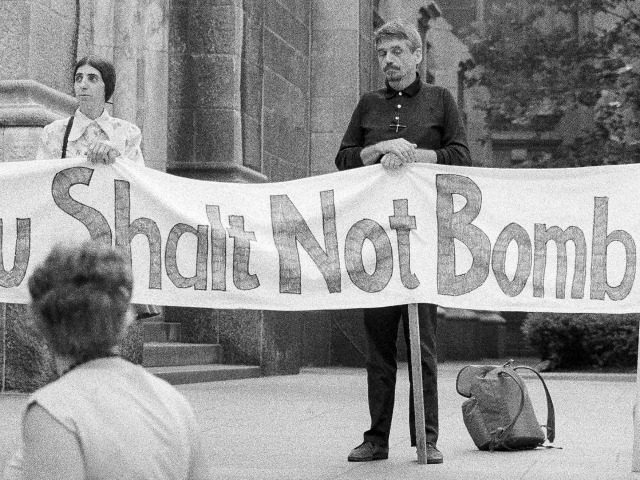


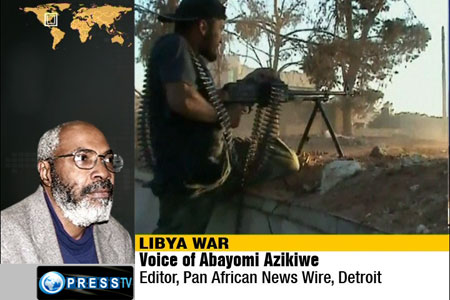


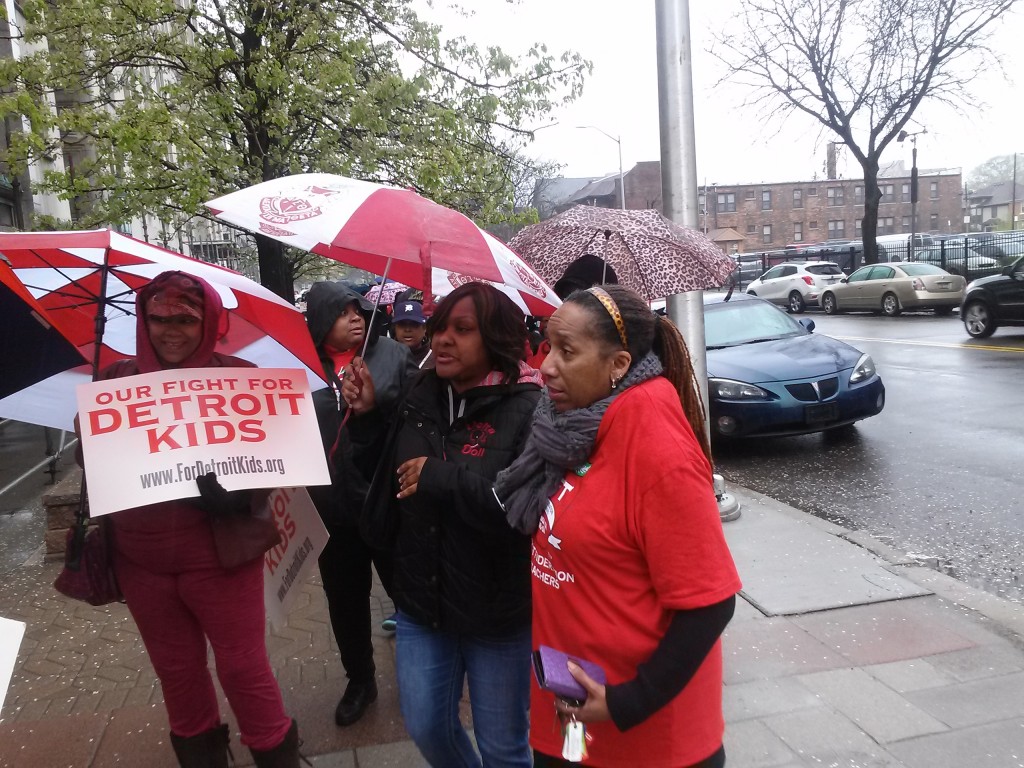
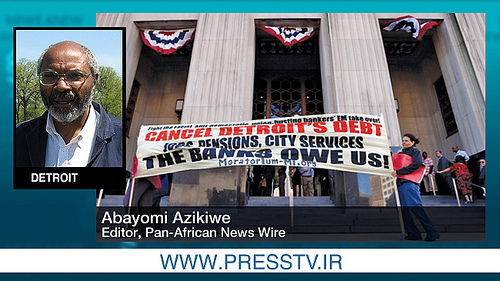
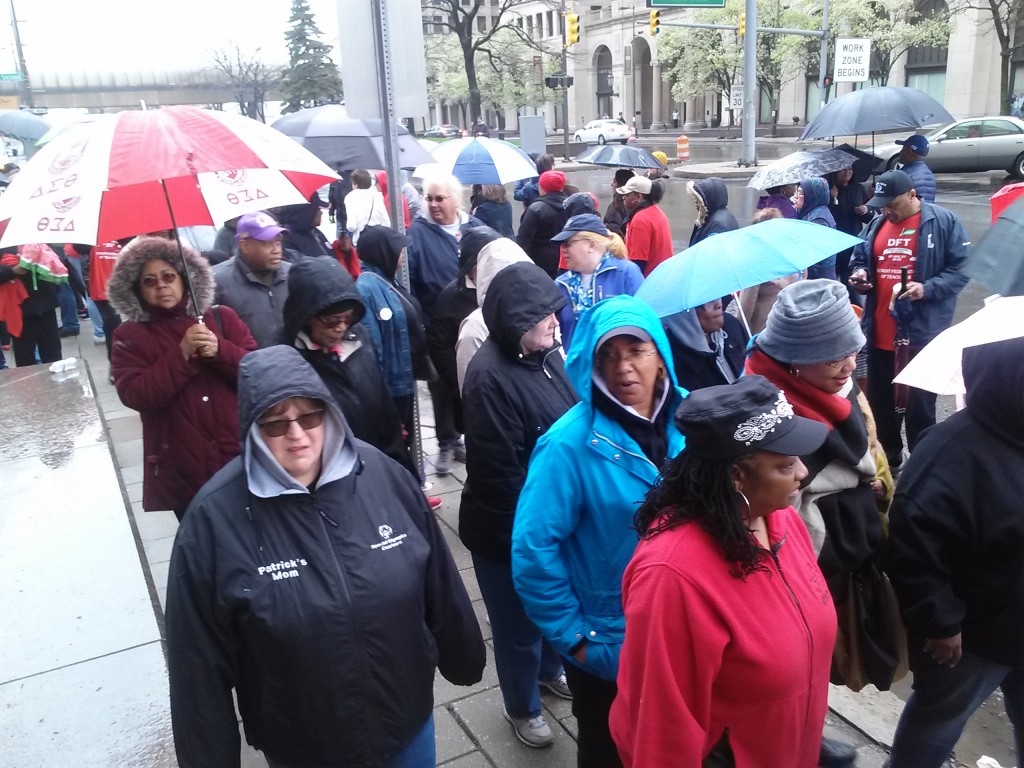





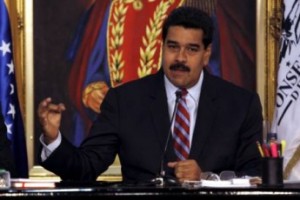













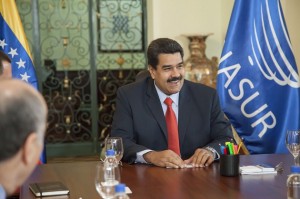




 Breaking: Baghdad State of Emergency, Green Zone Stormed
Breaking: Baghdad State of Emergency, Green Zone Stormed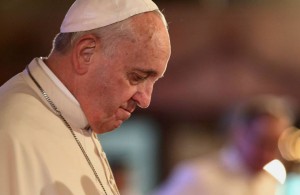
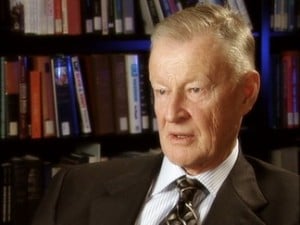

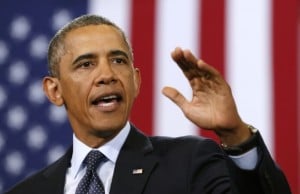
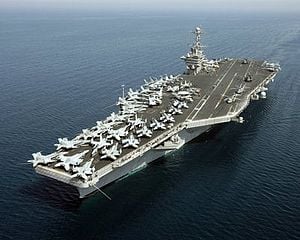


![Afghan special forces prepare to launch operation to retake the city from Taliban insurgents in Kunduz, Afghanistan, Sept. 29, 2015.<br /><br />Afghan security forces launched counter-offensive on Tuesday morning to retake the northern Kunduz city and expel Taliban militants from the area, Kunduz police spokesman Sayed Sarwar Hussaini said.<br /><br />(Xinhua/Najim Rahim)<br /><br />/CHINENOUVELLE_2909.AFG.003/Credit:CHINE NOUVELLE/SIPA/1509291919 (Newscom TagID: sfphotos823730.jpg) [Photo via Newscom]](https://prod01-cdn07.cdn.firstlook.org/wp-uploads/sites/1/2016/04/afghan-special-forces-1000x592.jpg)








![(151011) -- KUNDUZ, Oct. 11, 2015 (Xinhua) -- A policeman stands guard in front of Medecins Sans Frontieres (MSF) hospital destroyed by a U.S. airstrike in Kunduz city, capital of northern Kunduz province of Afghanistan, Oct. 11, 2015. The U.S. military, which allegedly carried out air strikes in support of the Afghan forces, inadvertently hit a hospital run by MSF last Saturday, killing 22, including 12 medical staff and injuring 37 others. (Xinhua/Omid) (Newscom TagID: xnaphotos565469.jpg) [Photo via Newscom]](https://prod01-cdn07.cdn.firstlook.org/wp-uploads/sites/1/2016/04/xnaphotos565469.jpg)

![(151011) -- KUNDUZ, Oct. 11, 2015 (Xinhua) -- Photo taken on Oct. 11, 2015 shows the destroyed Medecins Sans Frontieres (MSF) hospital after a U.S. airstrike in Kunduz city, capital of northern Kunduz province of Afghanistan. The U.S. military, which allegedly carried out air strikes in support of the Afghan forces, inadvertently hit a hospital run by MSF last Saturday, killing 22, including 12 medical staff and injuring 37 others. (Xinhua/Omid) (Newscom TagID: xnaphotos565468.jpg) [Photo via Newscom]](https://prod01-cdn07.cdn.firstlook.org/wp-uploads/sites/1/2016/04/msf-hospital-kunduz.jpg)







